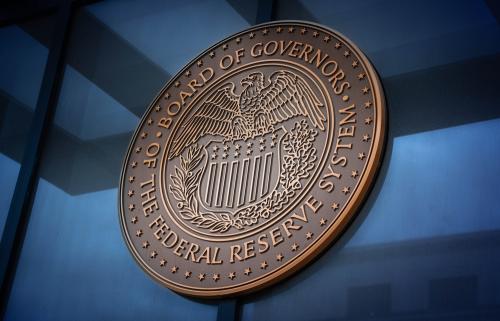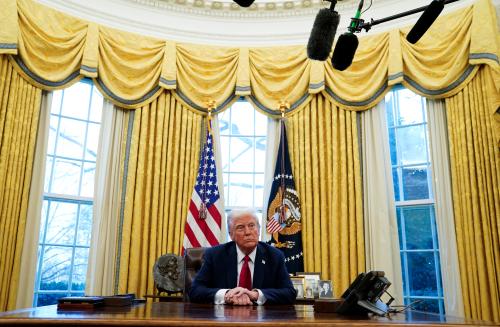The year 2011 will be remembered as the year when the idea of income inequality migrated from seminar rooms in colleges and think tanks to Zuccotti Park and main streets across America. According to a CBS/New York Times poll, at the end of 2011, two thirds of Americans agreed the nation had too much inequality. The Congressional Budget Office reported that after-tax income for the top 1 percent had more than tripled since 1979 while that of the bottom 80 percent increased by only one-third.
One reason for this dichotomy, although not the only one, was the declining progressivity of the tax system. Other reasons, according to a variety of studies, included technological change requiring a more skilled work force, the failure of the supply of educated workers to keep pace with the demand, changes in family composition such as the growth of single parent families, competition from low-wage workers in other countries, the decline in unionization, and an extraordinary rise in compensation among America’s elite, including its corporate executives. The latter who once made 30 times as much as the average worker, now take home closer to 300 times as much. If the inequality of incomes was bad, the concentration of wealth was even worse. The top 1 percent had about one fifth of the nation’s total income but over one third of its total wealth.
What is most striking in the data on income inequality is how much of the trend has been driven by the fact that incomes at the very top have headed into the stratosphere. Timothy Noah of Slate Magazine distinguishes between what he calls “the sort of rich” (the top 10 percent with annual incomes above about $100,000), “the rich” (the top 1 percent with annual incomes above about $368,000), and “the stinking rich” (the top 0.1 percent with annual incomes above $1 million — and average annual incomes of about $7 million). All three groups have done spectacularly well over the last two decades but those at the very top have done the best of all. Because it is hard to explain this phenomenon by the usual list of economic factors cited above, some scholars, such as Jacob Hacker and Paul Pierson, now argue that it reflects the growing political power of elites and their ability to influence their government. Many of these super rich work in finance and make large political donations; Congress’s willingness to preserve the low tax rate paid on the profits made by hedge fund managers is just one example of this type of influence.
As we head into an election year in 2012, the debate is likely to intensify. Democrats will argue that higher taxes on the wealthy are needed to put deficits on a more sustainable path over the longer term. Polls show that the public does not like higher taxes but makes an exception in the case of the wealthy, lending substantial support to the Democratic view. The Occupy Wall Street movement deserves credit for putting the “one percent vs. the ninety-nine percent” on the national agenda. Whether they can find ways to translate their agenda into political action or will simply implode as citizens tire of tents in public spaces remains to be seen.
Whatever happens to the Occupiers, the issue will not go away. Instead, it will likely come to a head in late 2012 when a lame duck Congress has to decide what to do about the expiration of the Bush tax cuts. Allowing them to expire for those making more than $250,000 a year, as the President has argued, would yield about $800 billion in revenue over the next decade. More importantly, it would end the deadlock on fiscal issues where action has been stymied by the unwillingness of Republicans to consider any significant tax increases and their multiple efforts to extend tax cuts for top earners.
Most Republicans will continue to ask what’s wrong with inequality? It can be argued that the rich, having worked hard and created new ideas and products, deserve their high incomes. Taxing them more would only serve to inhibit innovation and striving. Taxing millionaires destroys the few geese that lay the truly golden eggs (although Steve Jobs would not have liked being compared to a goose). Class warfare, we are told, is not the American way.
In fact, for many years, the majority of Americans has viewed these gaps between rich and poor as the product of a market economy that rewards talent and industry. They do not begrudge the rich their wealth as long as they believe it is deserved. What may be changing is a sense that things have gone too far, that the deck is stacked against those who play by the rules, and that our politics has been corrupted in the process.
The 2012 election will provide a forum for this debate to continue. President Obama’s speech in Kansas on December 6th was widely viewed as an opening statement in what will be a long and contentious battle for the White House and for control of the Congress. The President’s focus on inequality and opportunity suggests that the Administration views this issue as not only central to the kind of country we want to be but a winning political issue for Democrats. Whether it can trump concerns about joblessness or other issues remains to be seen.
The reasons for the growing concentration of incomes at the very top end are not entirely clear. But if the nexus between money and politics is an important part of the problem, the only solution is for the 99 percent to focus on this issue and use their political clout to prevail at the polls.
The Brookings Institution is committed to quality, independence, and impact.
We are supported by a diverse array of funders. In line with our values and policies, each Brookings publication represents the sole views of its author(s).



Commentary
2011: The Year that Income Inequality Captured the Public’s Attention
December 19, 2011